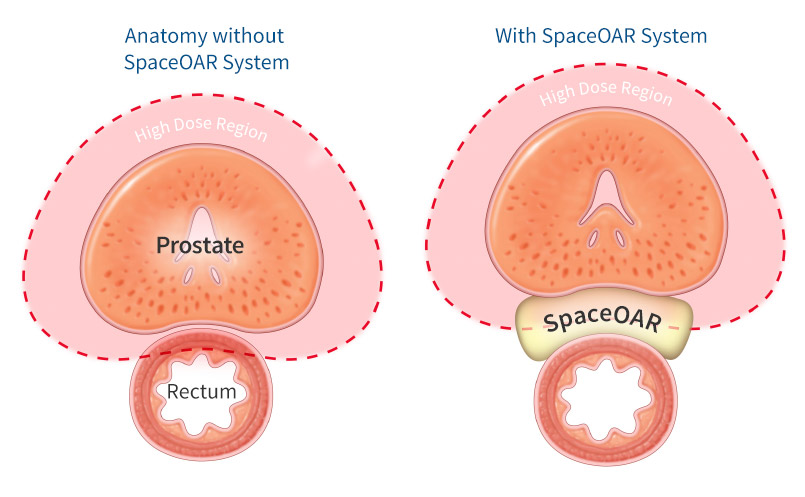SpaceOar Hydrogel
Arizona Oncology, a leader in Arizona in providing comprehensive, compassionate cancer care, offers a state-of-the-art treatment for prostate cancer. Patients who require radiation treatment for prostate cancer can now receive the SpaceOar® (OAR stands for “organ at risk”) System. The SpaceOar® System is a temporary injectable gel that protects the rectum in men undergoing prostate cancer radiation treatment either with external radiation (IMRT) or even with internal treatment aka Seeds. SpaceOar® Hydrogel is made of polyethylene glycol (PEG). PEG is widely used in cosmetics and drugs because it is non-toxic and well tolerated by the body. SpaceOar® Hydrogel is injected as a liquid that, within seconds, solidifies into a soft, gel-like synthetic material that expands and creates space between the prostate and rectum. Because it contains mostly water, it is called a “hydrogel.”
FDA approval occurred after the results of a phase III trial that demonstrated a significant reduction in the radiation dose to the rectum which translated into a significant decrease in side effects. The reduction in radiation dose to the rectum was approximately 75% with zero patients having grade 2 or greater rectal toxicity 3 years after treatment.
The SpaceOar® System is placed in a patient prior to external radiation treatment through a minimally invasive, outpatient procedure. The SpaceOar® Hydrogel is injected through a small needle into the space between the prostate and rectum while the patient is under local or general anesthesia. It is inserted during the same procedure where small gold markers (called fiducials) are placed in the prostate to localize it prior to each radiation treatment or immediately following placement of the radioactive seeds used in brachytherapy for prostate cancer.
Ultrasound imaging allows the oncologist to see and place the hydrogel in the proper location. On average, SpaceOar® Hydrogel creates about 0.5 inch (or 1.3 cm) of space between the prostate and rectum, permitting radiation treatment to the prostate with much less rectum radiation injury and fewer complications. The gel remains in place for about three months during radiation treatment, and then liquefies and is absorbed and cleared from the body in the patient’s urine.
Dr. Curtis Mack in Southern Arizona is certified in this state-of-the-art procedure.



